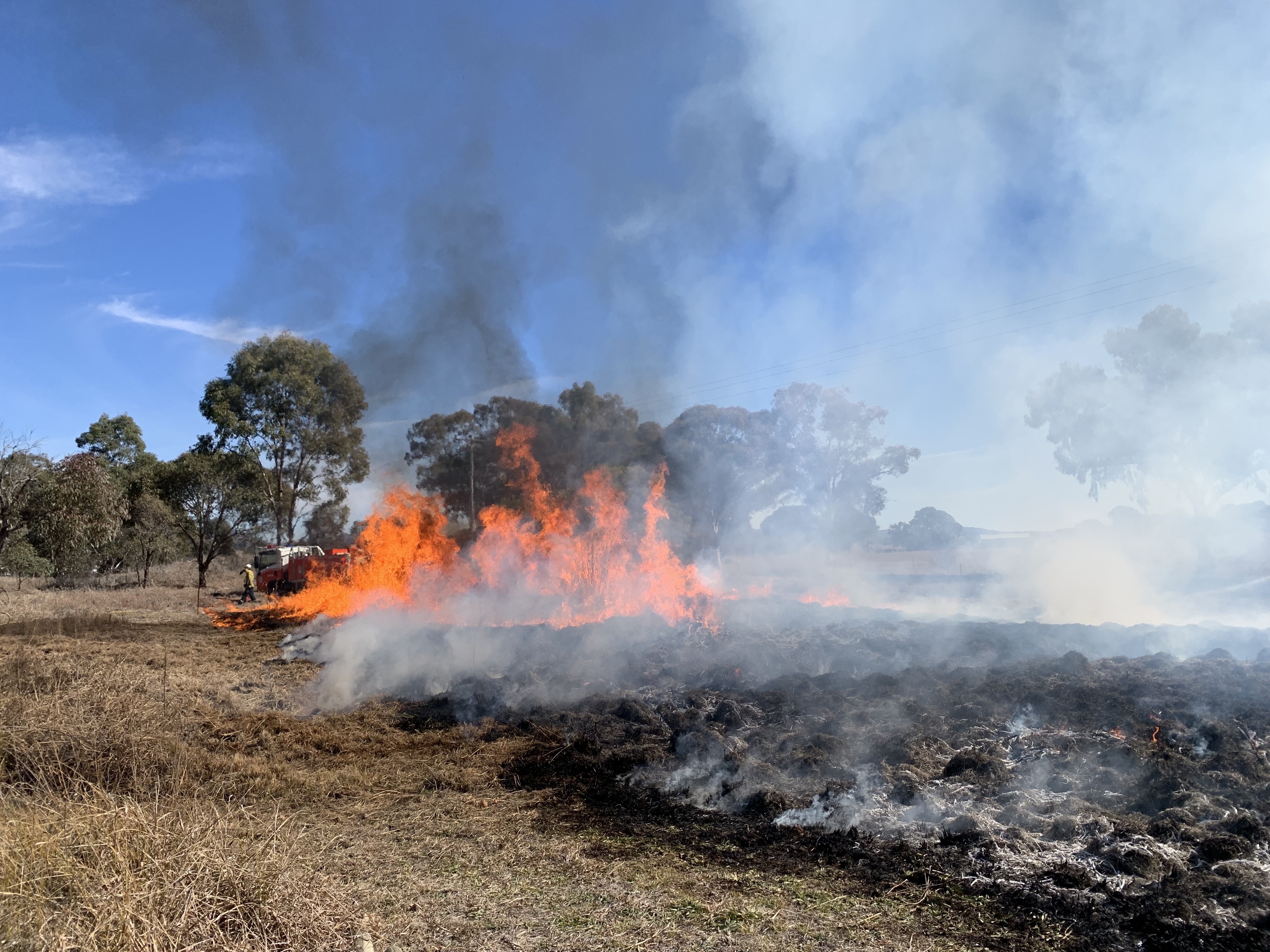On Saturday 27th July 2019 sparks were flying as Friends of Adams Lead (FOAL) members and the RFS conducted an ‘eco-burn’ at this beautiful reserve near Gulgong. Adams Lead contains mature remnants of Grassy Box Woodland which is classified as an Endangered Ecological Community! So what was going on? Co-ordinator of FOAL Fraser Stuart has the answers.
What is an ecological-burn?
An Ecological Burn is a burn that benefits the ecology. This may seem counter-intuitive as fire is harmful, however Australian flora has adapted to tolerate fire and some plants even need it to reproduce – eg Banksia. Grasslands in particular benefit from a regular (every 4-8 years) fire regime.
Why was it considered necessary to conduct a burn at Adams Lead?
The burn is a land management practice that we use in conjunction with other methods such as weeding and plantings. There were several reasons for the burn of this particular area:
* To reduce the foliage buildup from exotic plants like Paspalum which were dominating the environment. Paspalum, if allowed to build up, presents both an ecological problem and a fire hazard.
* To trigger native seed germination. A cool winter burn does not sterilise the ground and the native seedbank remains largely intact.
* To create an opportunity to reintroduce some indigenous plants with an autumn planting.
What area (size and location) was burnt?
The size of the burn was quite small, 30m x 12m and was near the north east corner of the reserve. The methodology we follow is what the CSIRO would call a ‘mosaic’ burn where small areas are burnt in a patchwork style as this allows the fauna to relocate to a nearby area to survive while the burn area recovers. Another benefit of the mosaic burn is should there be a fire in summer, it is much easier to control as the fuel load varies across the reserve.
How was the burn controlled?
The burn was conducted by the RFS in accordance with their procedures. A 3m perimeter was created around the burn area by slashing and the burn was conducted during optimal weather conditions when it was easy to contain. The burn area was surrounded by 3 fire trucks and monitored until fully extinguished.
What do you expect as the outcome for this plant community?
Based on previous burns we expect:
* Trees to re-sprout immediately
* Native grasses and forbs to germinate after the first spring rain event
* Exotic grasses and weeds to be suppressed for at least 3 years
How can others get involved in caring for this valuable place?
Perhaps the best way to find out more about Adams Lead is to come down to one of our working bees and check out the reserve and what we do. We meet on the first Saturday of the month from 8:30 till 12:30.

